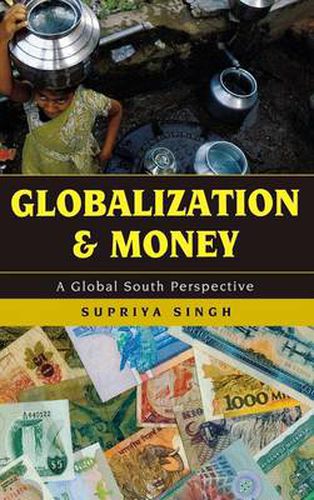Readings Newsletter
Become a Readings Member to make your shopping experience even easier.
Sign in or sign up for free!
You’re not far away from qualifying for FREE standard shipping within Australia
You’ve qualified for FREE standard shipping within Australia
The cart is loading…






Globalization and Money explores how men and women, particularly the poor and the unbanked in the global South, use money in ways that empower themselves and their families. Supriya Singh argues that money as a medium of relationships across cultures is a central component of globalization. She deftly weaves theory and individual stories to show how money is emblematic of interconnected markets, the half of the world that is unbanked, and gender disparities. She shows how men’s and women’s banking patterns are tied to their management of money in the household. Migrants send money home to show they care for their families and communities left behind. Yet these remittances are far from symbolic; instead they represent more than three times the total amount of official development assistance. This book illustrates how many of the most exciting changes in harnessing people’s savings; widening credit and insurance; and lowering the cost of technologies, payments and money transfers are taking place in Africa, Asia, and Latin America. Singh demonstrates how strategies to help the poor and marginalized have gone global in South-South conversations, making us rethink the contours of globalization and money.
$9.00 standard shipping within Australia
FREE standard shipping within Australia for orders over $100.00
Express & International shipping calculated at checkout
Globalization and Money explores how men and women, particularly the poor and the unbanked in the global South, use money in ways that empower themselves and their families. Supriya Singh argues that money as a medium of relationships across cultures is a central component of globalization. She deftly weaves theory and individual stories to show how money is emblematic of interconnected markets, the half of the world that is unbanked, and gender disparities. She shows how men’s and women’s banking patterns are tied to their management of money in the household. Migrants send money home to show they care for their families and communities left behind. Yet these remittances are far from symbolic; instead they represent more than three times the total amount of official development assistance. This book illustrates how many of the most exciting changes in harnessing people’s savings; widening credit and insurance; and lowering the cost of technologies, payments and money transfers are taking place in Africa, Asia, and Latin America. Singh demonstrates how strategies to help the poor and marginalized have gone global in South-South conversations, making us rethink the contours of globalization and money.